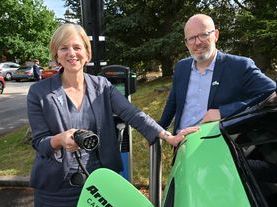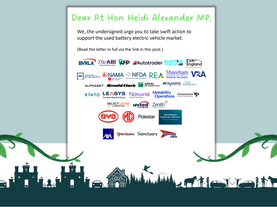The full extent of the UK’s “grey fleet” is revealed today in the most comprehensive report into private vehicles used for business journeys.
- Biggest ever study reveals true scale of ‘grey fleet’ vehicles
- 14m ‘grey fleet’ vehicles older, dirtier & less safe than company cars
- 15% reduction in grey fleet would take 225,000 cars off the road in pollution terms
The full extent of the UK’s “grey fleet” is revealed today in the most comprehensive report into private vehicles used for business journeys.
The nation’s grey fleet comprises 14 million cars – 40 per cent of all vehicles on the road – and costs employers more than £5.5bn a year in mileage claims and car allowances.
According to Getting To Grips With Grey Fleet, a new report produced by the Energy Saving Trust (EST) and commissioned by the British Vehicle Leasing and Rental Association (BVRLA), some 12 billion business miles are driven each year on Britain’s roads by employee-owned cars. The grey fleet describes the use of an employee’s own vehicle for business purposes. In return for using their own car, employees are reimbursed on a pence per mile basis.
Using government figures and data from real- life fleets, EST researchers were able to produce a profile of a typical grey fleet vehicle and compare it to other alternatives, including rental cars, car club vehicles and company cars. They found that the average grey fleet car was ‘exhausted’ – being older, more polluting and potentially more dangerous than its counterparts.
According to the report, Britain’s grey fleet is responsible for:
- Some of the oldest cars on UK roads, with an average age of 8.2 years
- 3.6 million tonnes of CO₂ per year, the equivalent to the average annual emissions of 1.5 million cars
- 8,156 tonnes of NOx, equivalent to twice the emissions from Transport for London buses
- A significant portion of the £2.7bn costs associated with work-related road accidents
- £5.5bn-plus worth of potentially unmanaged costs from mileage claims and car allowances
The BVRLA, the trade body for the rental and leasing of cars and commercial vehicles, says this “invisible” fleet is often overlooked by Britain’s bosses.
BVRLA Chief Executive Gerry Keaney said: “The invisible grey fleet is hiding in plain sight of Britain’s bosses and is a blind spot in the government’s transport strategy.
“The Approved Mileage Allowance Payments (AMAP) system used for reimbursing grey fleet drivers is the only part of the motoring tax regime that provides no incentive to drive fewer business miles or use cleaner vehicles.
“This blind spot is wasting taxpayer money, costing businesses millions of pounds, damaging our environment and making our roads more dangerous.”
The BVRLA is calling for a concerted effort from company bosses and policymakers to tackle these issues. The association is targeting a 50 per cent reduction in grey fleet mileage and costs by 2020, and is urging government ministers to help by highlighting the alternatives to grey fleet use and offering best practice guidance, particularly for public sector organisations.
Mr Keaney added: “Cutting grey fleet mileage by just 15 per cent would be the equivalent of taking 225,000 cars off the road in emissions terms.”
Andrew Benfield, EST’s Group Director of Transport, said: “Switching to more modern vehicles for work purposes can lead to significant cost savings, cut vehicle emissions and improve employee safety. Bosses should introduce rigorous electronic mileage management systems to reduce ‘mileage inflation’ by employees claiming a mileage allowance, and remove the incentive to drive unnecessary business miles.
“Car rental should be adopted for any work-related vehicle journey over 55 miles and a vehicle should be leased for employees driving at least 10,000 business miles per year.
“Employers should also incentivise alternatives to driving such as public transport, cycling and walking.”



